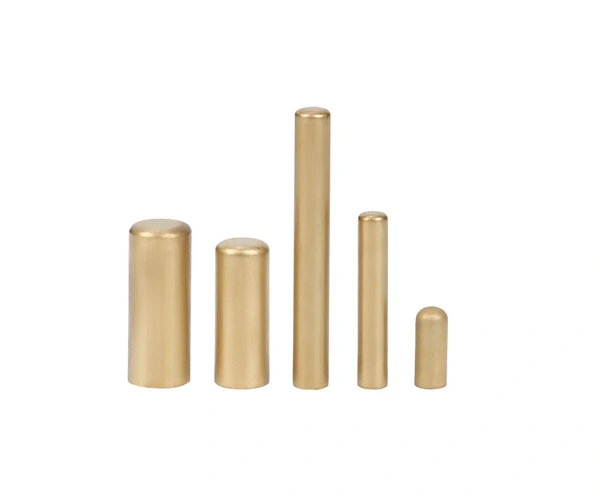

Material: Brass /carbon steel /stainless steel /aluminum /copper /galvanized sheet available
Thickness: 0.6mm
Tolerance: ±0.05mm
Manufacturing process: deep drawing
Surface treatment: powder coating /painting /anodization /sandblasting /zinc coating etc available
Aluminum deep drawing, shell deep drawing, housing deep drawing, stainless steel deep drawing
Stainless steel has a low elongation, a high elastic modulus E, and a high hardening index. During the tensile deformation process, due to the relative movement between the workpiece and the surface of the mold, adhesion phenomenon occurs under certain pressure, causing scratches on the product surface and "sticking nodules" on the mold surface, resulting in scratches, wrinkles, and cracks on the product surface, reducing the service life of the mold.
The tensile cracking of stainless steel plates sometimes occurs after the tensile deformation, and sometimes occurs immediately when the stretched part exits from the concave mold; Sometimes it occurs when subjected to impact or vibration after stretching deformation; Sometimes it only occurs after a period of storage or during use after stretching deformation.
Problems are prone to occur during the stretching process of stainless steel:
1. The reason for cracking formation: Austenitic stainless steel has a high cold work hardening index (0.34 for stainless steel). Austenitic stainless steel is metastable and undergoes phase transformation during deformation, inducing martensitic phase. Martensite is relatively brittle, making it prone to cracking. During plastic deformation, as the amount of deformation increases, the induced martensite content will also increase, and the residual stress will also be greater. The relationship between residual stress and martensite content: the higher the induced martensite content, the greater the residual stress caused, and the easier it is to crack during the processing.
2. The reason for the formation of surface scratches: The scratches on the surface of stainless steel stretching parts are mainly due to the relative movement between the workpiece and the mold surface. Under a certain pressure, direct friction occurs between the billet and the local surface of the mold. In addition, the deformation heat of the billet causes the billet and metal chips to melt on the surface of the mold, causing scratches on the surface of the workpiece.
Preventive measures for common forming defects in stainless steel:
1. Choose the appropriate stainless steel material: The commonly used materials in austenitic stainless steel are 1Cr18Ni9Ti and 0Cr18Ni9Ti. During the stretching process, 1Cr18Ni9Ti is more stable and has better crack resistance than 0Cr18Ni9Ti. Therefore, 1Cr18Ni9Ti material should be chosen as much as possible.
2. Reasonable selection of mold material: Stainless steel hardens significantly during the stretching process, producing many hard metal points that cause adhesion, making it easy to scratch and wear the workpiece and mold surface. Therefore, general tool steel for molds cannot be used.
3. Choose a reasonable convex and concave die fillet: The concave die fillet is closely related to the magnitude and distribution of stress. The rounded radius is large, and the pressing area of the edge pressing ring is insufficient, which is prone to instability and wrinkling; If the rounded corners are too small, the resistance of the material to enter the concave mold during the deformation process will increase, making it difficult for the material to flow and transfer inward, thereby increasing the maximum tensile stress in the transmission zone, which may lead to tensile cracking. Therefore, choosing a reasonable radius for convex and concave die fillets is crucial.
4. Using strip thinning stretching: Using strip thinning stretching can significantly reduce the tangential residual stress value of the stretched part, effectively preventing longitudinal cracking from occurring. Select an appropriate thinning coefficient based on different degrees of deformation and original sheet thickness Ψ N (usually 0.9t~0.95t), if Ψ If the value of n is too small, it will cause a sharp increase in deformation stress, leading to the rupture of the bottom of the tensile part.
5. Adding an intermediate annealing process in the stretching process: After multiple stretches, an intermediate annealing process should be carried out to eliminate residual stress and restore the structure of austenitic stainless steel. For high hardness stainless steel, intermediate annealing is generally required after 1-2 stretching processes. For example, 1Crl8Ni9Ti, the heating temperature is usually between 1150 ℃ and 1170 ℃, the heating time is 30 minutes, and it is cooled in air flow or water. Moreover, whether it is inter process heat treatment or post product heat treatment, it should be carried out immediately after stretching as much as possible to avoid deformation or cracking of the workpiece due to internal stress caused by long-term storage. But annealing and cleaning after annealing can lead to an increase in production cycle and affect surface quality
6. Using appropriate lubricants: Using appropriate lubricants has a significant effect on the stretching of stainless steel. Lubricants can form a thin film with a certain toughness and elongation between the convex and concave molds, which is beneficial for the tensile forming of stainless steel. For stainless steel stretching parts with high degree of stretching deformation and difficult forming, stainless steel plate stamping and stretching oil can be used in actual production.



